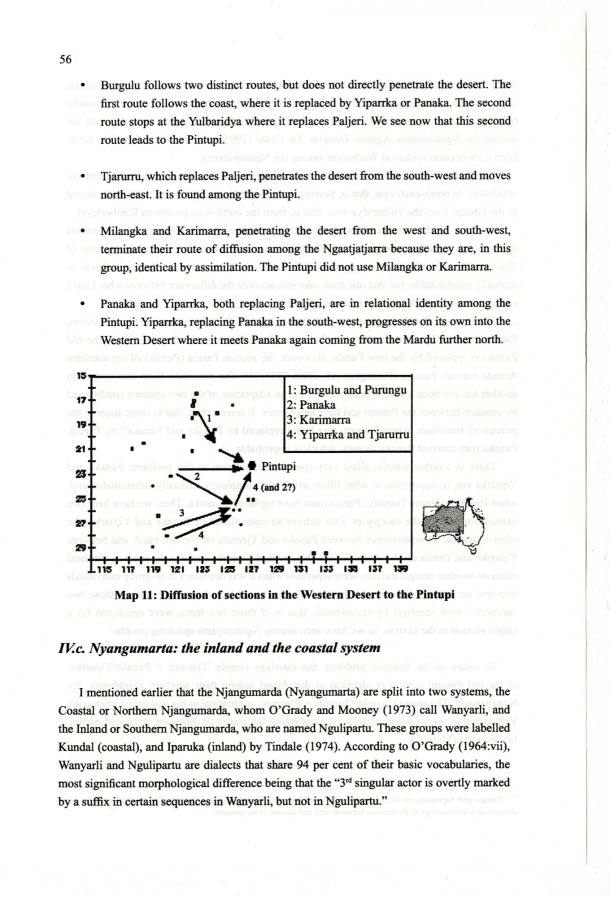|
| 
[Note: this transcription was produced by an automatic OCR engine]
56
Burgulu follows two distinct routes, but does not directly penetrate the desert. The
first route follows the coast, where it is replaced by Yiparrka or Panaka. The second
route stops at the Yulbaridya where it replaces Paljeti. We see now that this second
route leads to the Pintupi.
Tjarurru, which replaces Paljeri, penetrates the desert from the south-west and moves
north»east. It is found among the Pintupi.
Milangka and Karimana, penetrating the desert from the west and south-West,
terminate their route of diffusion among the Ngaatjatjarra because they are, in this
group, identical by assimilation. The Pintupi did not use Milangka or Karimarra.
Panaka and Yiparrka, both replacing Paljeri, are in relational identity among the
Pintupi. Yiparrka, replacing Panaka in the south-west, progresses on its own into the
Western Desert where it meets Panaka again coming from the Mardu further north.
. 1: Burgulu and Purungu
3 - 2: Panaka
3: Karimarra
4: Yiparrka and Tjarurru
L2.
I Pintupi
- .f4and2'
n
I 3 -n
U 4
.115 ‘M1’ ‘I19 ‘I2 IIS IE II? 15 331 IS} I3 I}? ‘I5
Map 11: Diffusion of sections in the Western Desert to the Pintupi
I I/.'c. Nyangumarta: the inland and the coastal system
I mentioned earlier that the Njangum do Nyangumarta are split into two systems, the
Coastal or Northern Njangumarda, whom O’Grady and Mooney 1973 call Wanyarli, and
the Inland or Southern Njangumarda, who are named Ngulipartu. These groups were labelled
Kunda] coastal, and Iparuka inland by Tindale 1974. According to O’Grady 1964:vii,
Wanyarli and Ngulipartu are dialects that share 94 per cent of their basic vocabularies, the
most significant morphological difference being that the “3" singular actor is overtly marked
by a sufiix in certain sequences in Wanyarli, but not in Ngulipartu.”
|